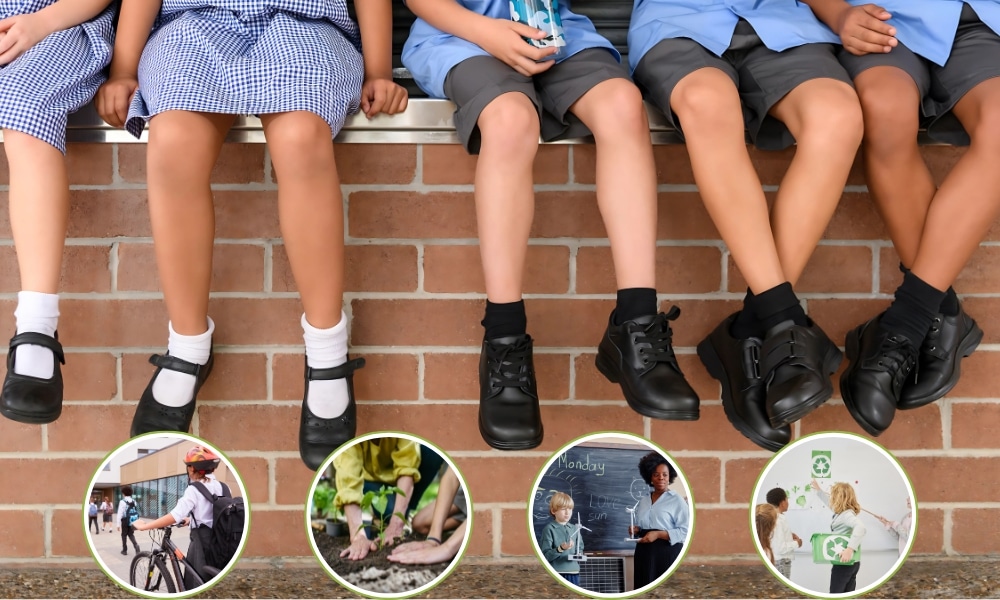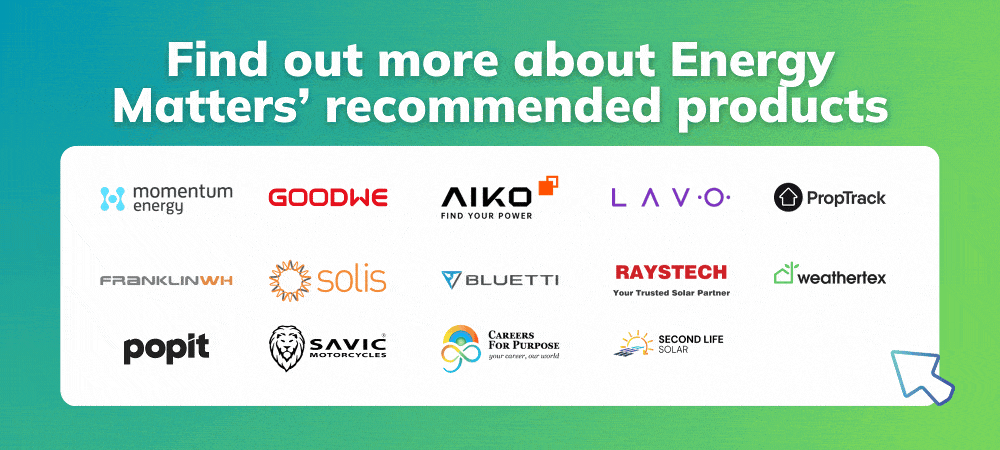Australian schools have a significant opportunity to lead the way in environmental sustainability. Embracing sustainable school initiatives reduces their environmental impact and educates the next generation about responsible practices. This comprehensive guide explores various eco-friendly school tips and initiatives that Australian schools can implement to reduce their school carbon footprint and foster a culture of sustainability.

On this page
What is a carbon footprint?
Australia’s carbon footprint refers to the total greenhouse gas emissions produced by individuals, industries, and institutions nationwide. Schools, in particular, play a vital role in helping reduce their carbon footprint through sustainable school initiatives focusing on energy efficiency, waste reduction, and green transportation.
Educational institutions can significantly reduce their environmental impact by adopting eco-friendly school tips such as installing solar panels, using LED lighting, and promoting recycling programs.
Use Energy Matters’ carbon footprint calculator to calculate your household and business’s direct emissions.

Understanding the environmental impact of schools
Like any large organisation, schools contribute to greenhouse gas emissions and resource depletion. Energy consumption for lighting, heating, and cooling, waste generation from daily operations, water usage for sanitation and groundskeeping, and transportation of students and staff all contribute to a school’s carbon footprint.
According to the Australian Bureau of Statistics, the education sector accounts for a notable percentage of national energy consumption. Furthermore, significant amounts of school waste are in landfills, contributing to environmental pollution. Addressing these areas through conscious and consistent effort is crucial for creating a more sustainable future.
Key areas for sustainable school initiatives
To effectively reduce school carbon footprint, schools can focus on several key areas:
- Energy efficiency: Energy efficiency reduces energy consumption and is essential for sustainability.
- Renewable energy adoption: Transitioning to clean energy sources significantly lowers emissions.
- Waste management: Implementing strategies to reduce, reuse, and recycle waste is essential.
- Water conservation: Reducing water usage protects this precious resource.
- Sustainable transportation: Encouraging eco-friendly commuting options lowers transportation emissions.
- Curriculum integration: Embedding sustainability into the curriculum fosters environmental awareness.
- Community engagement: Involving students, staff, parents, and the wider community strengthens sustainability efforts.
- Sustainable procurement: Choosing environmentally responsible products and services minimises indirect impacts.
- Biodiversity enhancement: Creating green spaces and promoting local ecosystems within school grounds.
Implementing eco-friendly school tips: Practical strategies
Here are some practical, eco-friendly school tips that Australian schools can adopt:
1. Energy efficiency
- Switch to LED lighting: Replacing traditional incandescent or fluorescent lights with energy-efficient LEDs can significantly reduce electricity consumption and lower energy bills. LEDs have a much longer lifespan, reducing replacement costs and waste.
- Install energy-efficient appliances: Utilising appliances with high energy efficiency ratings can significantly decrease electricity usage. Encourage the procurement of energy-efficient computers, printers, and kitchen equipment.
- Install Smart Building Management Systems: These systems can optimise heating, ventilation, and air conditioning (HVAC) based on occupancy and weather conditions, preventing unnecessary energy use. Zoning HVAC systems allows for heating or cooling only occupied areas.
- Improve insulation: Ensuring proper insulation in roofs, walls, and windows minimises heat loss in winter and heat gain in summer, reducing the reliance on heating and cooling systems.
- Implement occupancy sensors and timers: Installing sensors in classrooms, hallways, and restrooms ensures that lights are only on when needed. Timers can be used for outdoor lighting and other equipment.
- Energy audits: Conducting regular energy audits helps identify areas of energy inefficiency and provides recommendations for improvement. Government grants and programs may be available to support these audits.
- Promote energy awareness: Educating students and staff about energy conservation through campaigns and signage can encourage behavioral changes. Simple actions like turning off lights and computers can make a difference when not in use.
2. Renewable energy adoption
- Explore green energy procurement: Schools can purchase electricity from renewable energy providers, supporting the clean energy sector’s growth even without on-site generation.
- Small-scale wind turbines: In suitable locations with consistent wind resources, small-scale wind turbines can supplement electricity generation. However, factors like noise and visual impact need careful consideration.
- Solar hot water systems: In solar hot water systems, solar energy can heat water for kitchens, showers, and other facilities, reducing reliance on fossil fuel-based heating sources.
- Solar panel installation: Investing in solar photovoltaic (PV) systems is a powerful way to generate clean electricity and significantly reduce the school’s carbon footprint. Feed-in tariffs can provide financial returns for excess energy exported to the grid. Many schools across Australia have successfully implemented solar power.

3. Waste management
- Implement comprehensive recycling programs: It is crucial to provide clearly labeled bins for different waste streams (paper, cardboard, plastics, glass, and food scraps) and educate students and staff on proper sorting.
- Reduce single-use plastics: Encouraging reusable water bottles, coffee cups, and food containers can significantly decrease plastic waste. Implementing policies to minimise the use of disposable items in the canteen and at events is effective.
- Composting food waste: Composting systems for food scraps and organic waste can divert significant amounts of material from landfills and create nutrient-rich compost for school gardens. Worm farms (vermicomposting) are also a great option.
- Paper reduction strategies: Promoting digital communication, double-sided printing, and reducing unnecessary printing can save significant amounts of paper. Utilising online learning platforms and digital resources can further minimise paper consumption.
- Donation and reuse initiatives: Establishing systems for donating unwanted items like books, stationery, and uniforms can prevent them from ending up in landfills. Organising swap shops or second-hand uniform sales promotes reuse.
4. Water conservation
- Install water-efficient fixtures: Replacing traditional taps, toilets, and showerheads with water-efficient models can significantly reduce water consumption. Look for products rated by the Water Efficiency Labelling and Standards (WELS).
- Implement rainwater harvesting: Collecting rainwater from roofs and using it for irrigation, toilet flushing, and other non-potable uses can reduce reliance on the mains water supply. Installing water tanks is a key component.
- Water-wise landscaping: Choosing native and drought-tolerant plants for school gardens minimises the need for irrigation. Implementing mulching and efficient watering techniques further conserves water.
- Monitor water usage: Regularly monitoring water bills and installing water meters can help identify leaks and areas of high consumption. Educating students and staff about water conservation practices is also essential.
5. Sustainable transportation
- Promote active travel: Initiatives like bike racks, secure storage, and walking school buses can encourage students and staff to walk, cycle, or scooter to school, reducing traffic congestion and emissions.
- Support public transportation: Providing information about public transport options and offering subsidised travel passes can encourage their use.
- Optimise school bus routes: Planning efficient bus routes can minimise travel distances and fuel consumption. Exploring the possibility of electric or hybrid school buses can reduce the school’s carbon footprint.
- Carpooling initiatives: Facilitating carpooling among staff and parents can reduce the number of individual vehicles traveling to and from school.
6. Curriculum integration
- Embed sustainability across subjects: Integrating environmental themes and concepts into various subjects, from science and geography to mathematics and English, can foster a deeper understanding of sustainability issues.
- Hands-on learning experiences: Engaging students in practical activities like gardening, composting, and waste audits provides valuable learning experiences and reinforces sustainable practices.
- Guest speakers and excursions: Inviting environmental experts to speak to students and organising visits to environmental centers or sustainable businesses can broaden their perspectives.
7. Community engagement
- Involve students in decision-making: Creating student environmental committees empowers students to take ownership of sustainability initiatives and contribute their ideas.
- Engage parents and the wider community: Communicating the school’s sustainability goals and involving parents and the local community in projects and events can build support and foster a shared sense of responsibility.
- Collaborate with local organisations: Partnering with environmental groups, businesses, and government agencies can provide access to resources, expertise, and funding opportunities.
8. Sustainable procurement
- Prioritise eco-labeled products: Choosing products with recognised environmental certifications (e.g., Forest Stewardship Council (FSC) certified paper, energy-efficient appliances) minimises ecological impact.
- Support local and ethical suppliers: Sourcing goods and services from local and ethical suppliers reduces transportation emissions and supports sustainable businesses.
- Consider the entire lifecycle of products: Evaluating the environmental impact of products throughout their lifecycle, from raw material extraction to disposal, helps make more informed purchasing decisions.
- Bulk purchasing: Buying in bulk can reduce packaging waste and often lowers the cost per unit.
9. Biodiversity enhancement
- Create school gardens: Establishing vegetable gardens, native plants, or wildlife gardens provides opportunities for hands-on learning, enhances biodiversity, and creates green spaces.
- Plant native trees and shrubs: Native plants support local ecosystems and require less water and maintenance than exotic species.
- Create habitats for wildlife: Incorporating features like bird baths, insect hotels, and log piles can attract and support local wildlife.
- Reduce pesticide and herbicide use: Opting for organic gardening practices and integrated pest management minimises the use of harmful chemicals.
Measuring progress and celebrating success
It is essential to track the progress of sustainable school initiatives to understand their impact and identify areas for improvement. Regularly monitoring energy and water consumption, waste generation, and transportation patterns provides valuable data. Celebrating successes and sharing achievements with the school community can motivate continued efforts and inspire others.
The long-term benefits of sustainable school practices
Implementing eco-friendly school tips and sustainable school initiatives offers numerous long-term benefits beyond environmental protection. These include:
- Reduced operating costs: Energy and water efficiency measures and waste reduction can significantly save costs.
- Improved learning environment: Natural light, better air quality, and green spaces can enhance student well-being and academic performance.
- Enhanced school reputation: Being recognised as a sustainable school can attract environmentally conscious families and staff.
- Development of responsible citizens: Educating students about sustainability equips them with the knowledge and skills to make informed decisions and contribute to a more sustainable future.
Sources: Carbon Neutral School Foundation – 100 ways to make your school sustainable | Refoorest – Reduce your School’s Carbon Footprint: 10 Eco-Friendly Tips | Clean Up Australia – Tips for improving sustainability in your school community | BUILD Magazine – 5 Ways to Reduce Your School’s Carbon Footprint
A call to action for a sustainable tomorrow
Australian schools have a vital role in building a sustainable future. By embracing sustainable school initiatives and implementing practical eco-friendly school tips, educational institutions can significantly reduce their carbon footprint, conserve valuable resources, and educate the next generation of environmental stewards.
The journey towards sustainability requires commitment, collaboration, and a willingness to adopt innovative solutions. Energy Matters urges every Australian school to take meaningful steps today to create a greener, more sustainable tomorrow. Let us empower our students to become the environmental leaders of the future.
Energy Matters has been recognised for our continued excellence in the Australian solar industry. We provide our customers with high-quality resources, insight, and access to reputable solar quotes.
Our team of solar experts can help you get up to 3 FREE solar quotes from pre-qualified and vetted solar firms in your area.















































